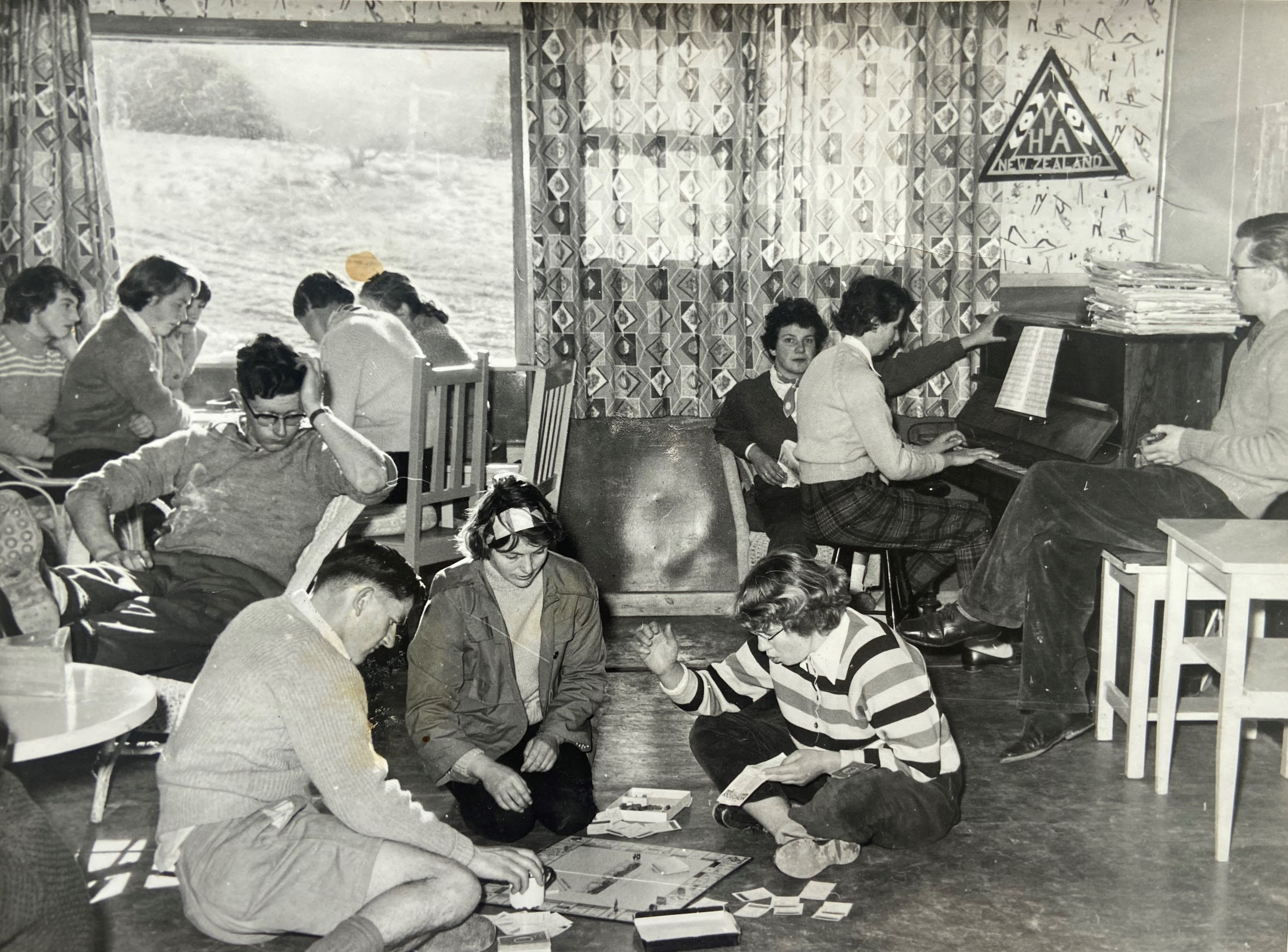
Healthy youth tourism at the YHA Mt Cook, 1959, submitted to TIA’s 70th anniversary photo competition.
1950s NZ
Up until the 1950s tourism in New Zealand was largely the preserve of those with a car or rail ticket. The country’s beauty was internationally known but, as the Te Ara website notes, many 1950s New Zealanders remained sceptical that tourism was a little frivolous and too distant for overseas visitors. Most Kiwis holidayed at a bach or on a caravan, restaurants were licensed, and weekend shopping had hardly been thought of.
Against this background there were some advances. The New Zealand Travel and Holiday Association (now Tourism Industry Aotearoa) was formed in 1953 to advance the causes of the fledgling tourism industry. The Homer Tunnel was completed, making it easier to visit Milford Sound. The Tourist Hotel Corporation (THC) was set up by the government in 1955 to provide accommodation for international visitors. Activity-based tourism also started to expand with the Whakapapa skifield opening in 1953, and the invention of the Hamilton jet saw the kernels of jet boat tourism start to develop (material drawn from Te Ara Encyclopedia of New Zealand).
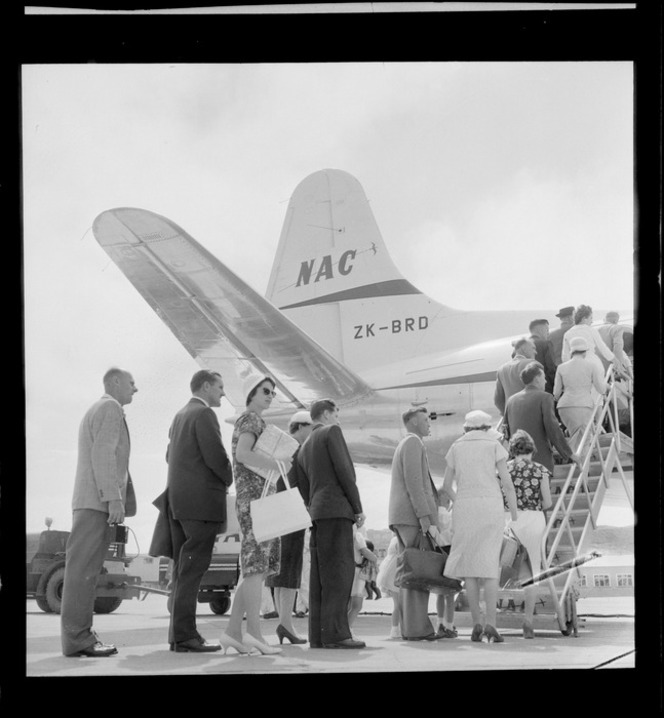
Boarding NAC plane in Wellington
1960s NZ
The 60s saw tourism really take off in New Zealand, thanks to the emergence of commercial jet flights.
Migrants had already begun to fly instead of sail to New Zealand, and Tasman Empire Airways (TEAL) provided flights across the Tasman, and the first New Zealand ski-plane landed on Tasman Glacier in 1955.
But long-haul passenger jets made it easier for ordinary visitors to reach New Zealand, and for Kiwis to go on their OE. British Overseas Airways Corporation’s inaugural London–New Zealand flight in 1963 was a watershed moment, and in 1966 Auckland opened its new airport in Mangere. The same year, Christchurch Airport opened an international terminal.
NAC (National Airways Corporation, pictured above) served the domestic market until 1978 when it merged with the internationally-focused airline Air New Zealand.
Creating services and entertainment for overseas visitors was a growing focus. A decade earlier, the Travel and Holidays Association, as TIA was known, had campaigned to free up government controls on hotels. By 1967, the association’s president Mr. J.L. Chapman was advocating for trained staff to be brought into the country for the tourist industry.
A number of high-profile tourist attractions got their start in the 60s, including Queenstown’s Skyline gondola to Bob’s Peak in 1967. In 1963 The Māori Arts and Crafts Institute (now Te Puia) was set up by legislation to preserve traditional carving skills and make high-quality souvenirs.
(sources: TIA archives, Te Ara – Encyclopedia of New Zealand)
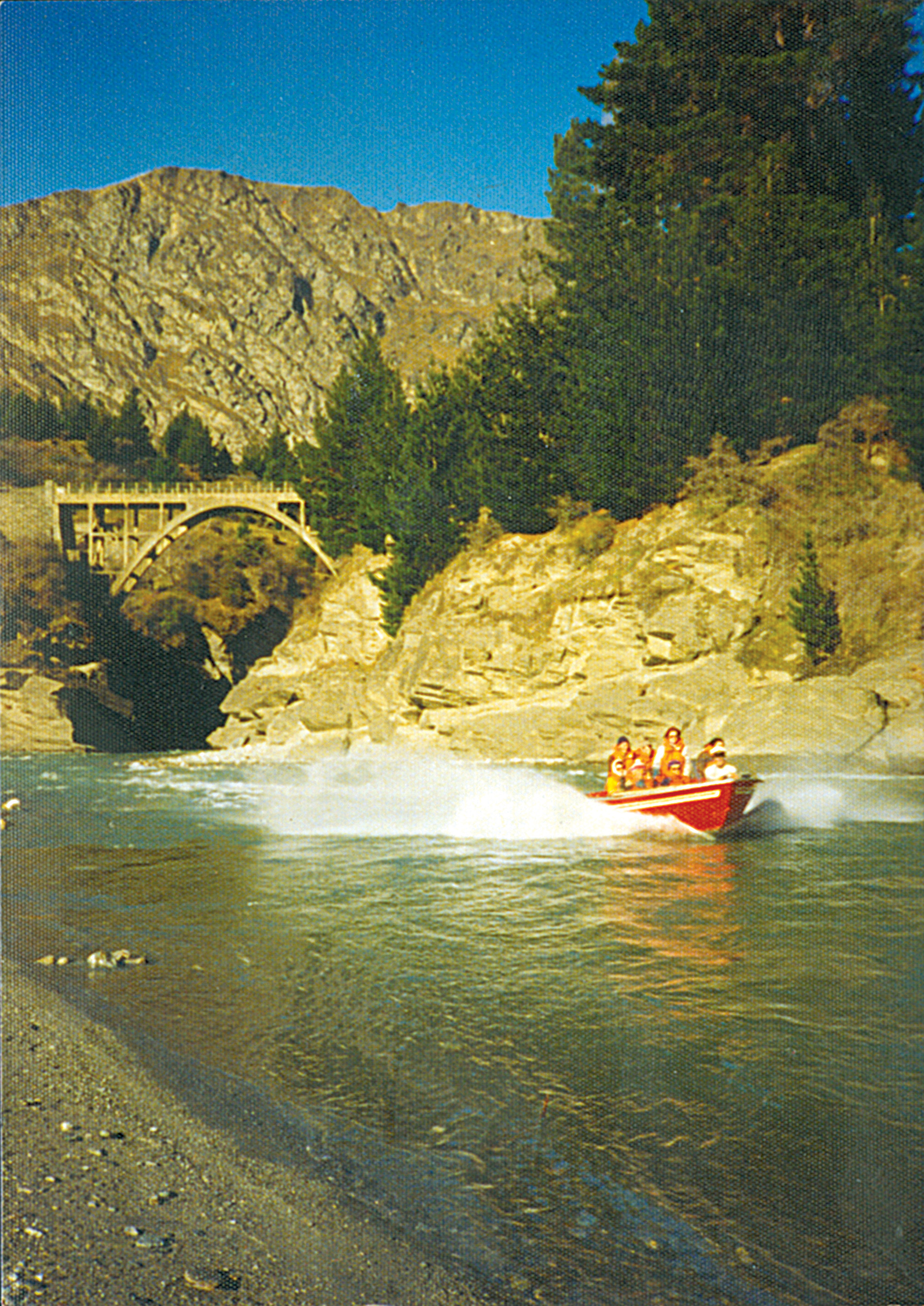
Shotover Jet in 1972
1970s NZ
In the 1970s tourism was well and truly gathering steam, thanks to the advent of jet aircraft. In response, New Zealand Rail added prestigious new passenger services, such as the Silver Fern and Silver Star. In 1971 NZR also resurrected the steam-hauled Kingston Flyer, which had last seen service in 1937 except for holiday runs.
Other tourism ventures were also taking off. In 1971 the Agrodome farm show at Rotorua was established by local farmer George Harford and champion shearer Godfrey Bowen, setting the stage for more rural tourism. Further south, the Wanaka Maze opened in 1973, and Shotover Jet - which had been around since the mid-60s - was helping to cement Queenstown’s reputation as an adventure playground (picture, 1972).
In 1978 domestic air carrier NAC merged with Air New Zealand. Air NZ had been the company name for Tasman Empire Airways Ltd since the early 60s when TEAL was bought by the government. In the late 70s these two operators merged and became the airline we know today.
The 70s also brought change for what is now Tourism Industry Aotearoa. It changed its name in 1970 from the New Zealand Travel and Holiday Association to the New Zealand National Travel Association.
(Sources: NZ History, Te Ara – Encyclopedia of New Zealand)
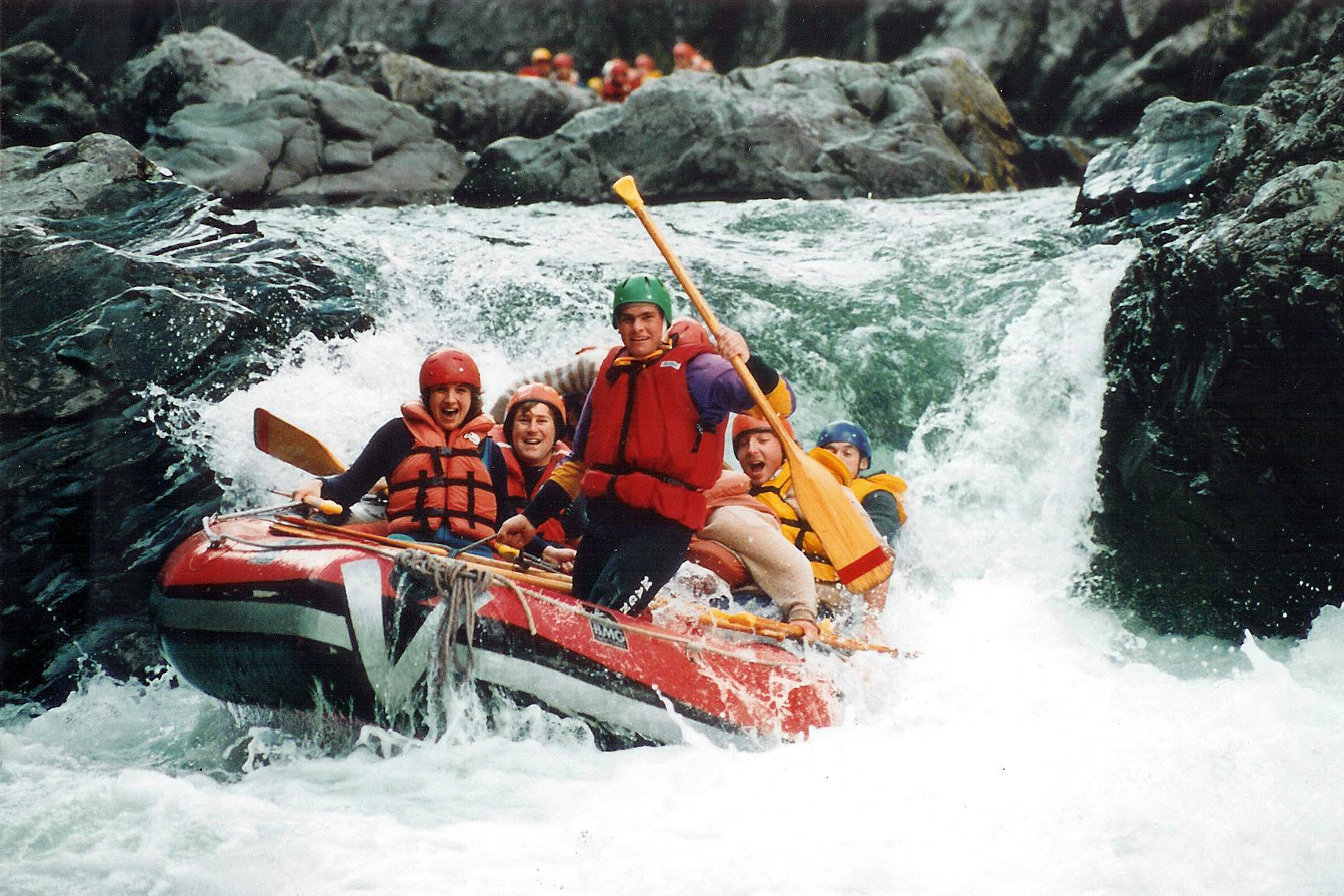
1980s NZ
Wide-bodied (‘jumbo’) jets in the 80s further revolutionise New Zealand tourism, cutting costs and the tyranny of distance. By 1985 half a million tourists are visiting New Zealand.
The devaluation of the Kiwi dollar in 1984 gives visitors added incentive in terms of value for money to come to New Zealand
Changes to aviation policy in 1985 allow many more carriers to fly to New Zealand. It heralds the start of a wave of liberalisation, including the sale of the state-owned Tourist Hotel Corporation’s hotels and more relaxed alcohol laws. Nightlife, cafes and restaurants spread.
People begin to move away from coach tours to independent and more active forms of exploration. Great walks, sky-diving, rafting and other active attractions grow in popularity. In 1988, A. J. Hackett and Henry van Asch set up commercial bungy jumping from the Kawarau River bridge. Nature-based attractions such as Whale Watch (1987) are established, and campervans, rental cars and camping grounds become increasingly popular.
In 1988 tourism eclipsed dairying for the first time to become the country’s top foreign exchange earner. The following year, New Zealand holds its first travel fair, the New Zealand Tourism Exchange, which grows into TRENZ.
In 1984, the New Zealand Tourist Industry Federation is formed to replace the New Zealand National Travel Association, covering all sectors of the visitor industry and community.
The same year, the government also begins a popular domestic tourism campaign, ‘Don’t leave town till you’ve seen the country’.
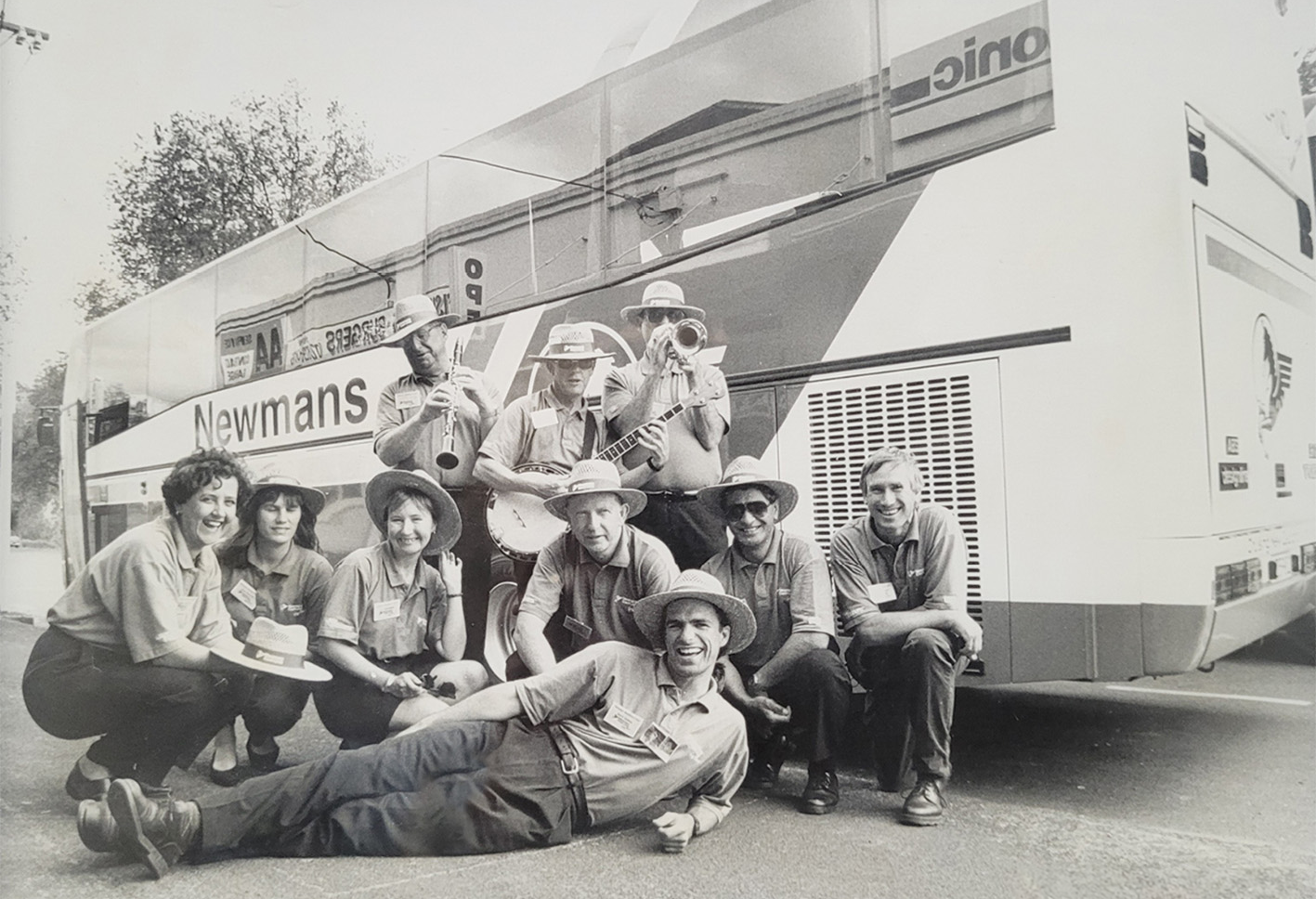
Newmans Relaunch festivities 1992
1990s NZ
The 90s continue to see travellers drift away from using travel agents to making their own decisions, and tourism marketing shifts towards consumer advertising. In 1992 the Tourist and Publicity Department is abolished and the Tourism Board (Tourism NZ) and Ministry of Tourism (now part of MBIE) is formed.
1991 Air NZ is sold and for a time is fully privatised.
The Tourist Industry Federation becomes the Tourism Industry Association in 1993.
Rail passenger services become increasingly reliant on the tourism market. In the early 1990s, the TranzAlpine service between Christchurch and Greymouth is marketed as one of the great scenic trail trips. Otago’s Taeri Gorge Railway also becomes successful.
Auckland’s SkyTower is opened in 1997.
In 1999, the 100% Pure NZ campaign is devised by M&C Saatchi for Tourism New Zealand, a campaign that remains at work today.
(Sources: Te Ara – Enclyclopedia of NZ, NZ History, N. Plimmer)
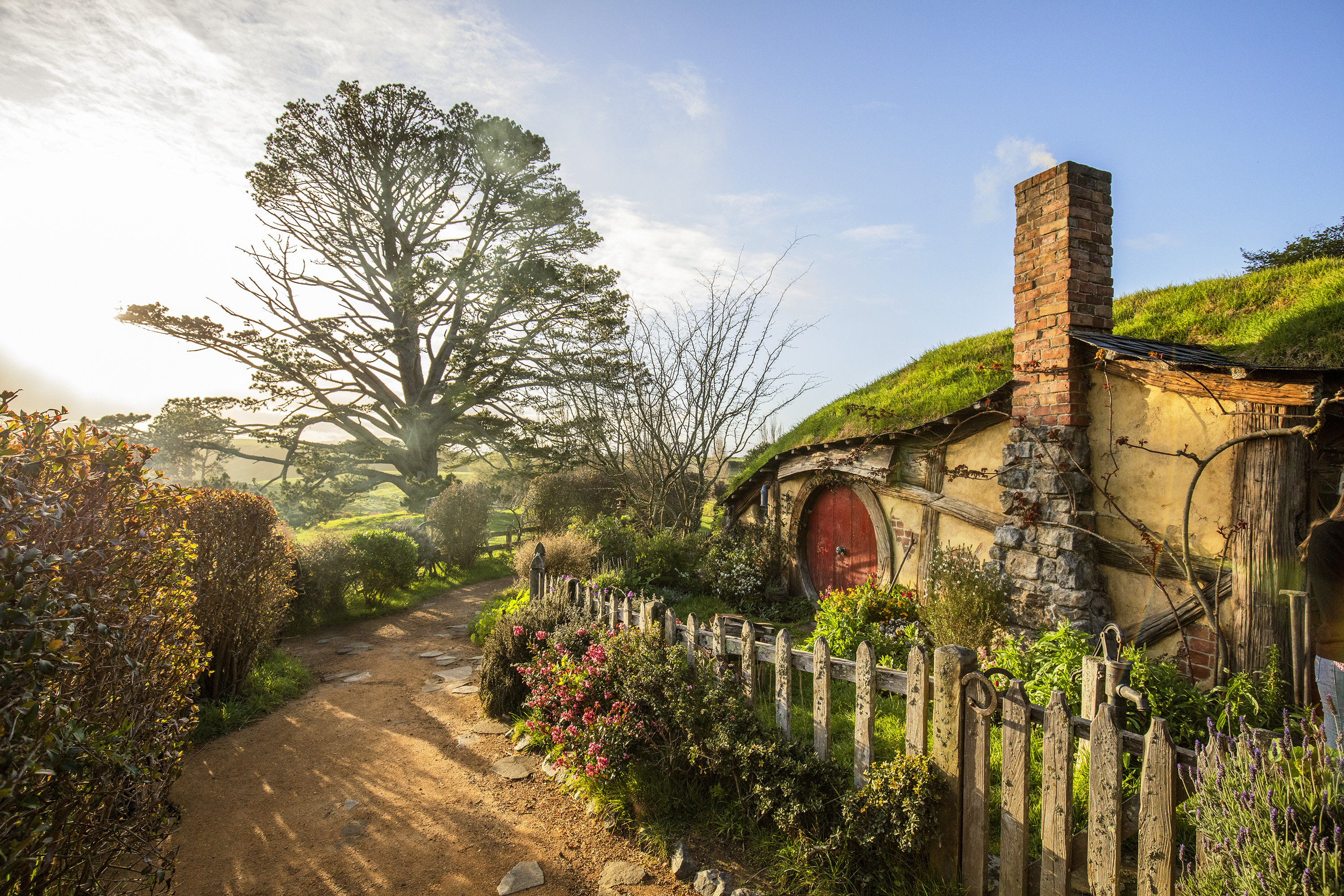
Bag End, Hobbiton, from The Lord of the Rings movie set
2000s NZ
In 2000, the recently established Tourism Satellite Account confirms that tourism is again New Zealand’s largest export earner. Visitor numbers hit 1.65 million, compared with around 70,000 in 1959–60.
From 2001 onwards, backdrops from the Lord of the Rings movies add to New Zealand’s scenic allure.
Air New Zealand returns to majority government ownership in 2001 after near bankruptcy due to a failed tie up with Australia’s Ansett airline.
The SARs outbreak in 2003 tempers visits from Asia for a time.
Prime Minister John Key becomes Tourism Minister in 2008.
The daytime Overlander rail service on the North Island main trunk narrowly survives closure in 2006 - it is replaced by the Northern Explorer in 2012.
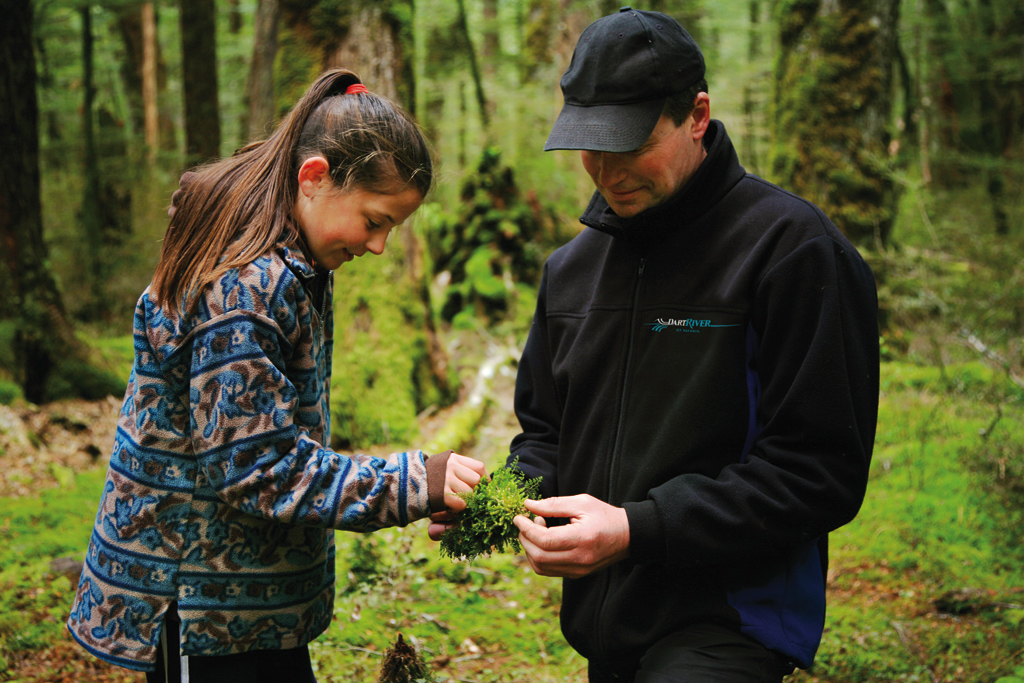
A guide on a Wilderness trip with Dart River Jet discusses flora and fauna
2010s - today NZ
133,200 of overseas visitors come to New Zealand for the 2011 Rugby World Cup, spending $397 million.
Tourism Industry Association is renamed Tourism Industry Aotearoa in 2016.
In 2017 the Tourism Sustainability Commitment is formed, under TIA’s management, to ensure economic, cultural, environmental and social sustainability are genuine ethical underpinnings of the industry.
In 2019, tourism is directly employing approximately 8.4% of the country’s total workforce.
In December 2019, 22 people lose their lives during an eruption on Whakaari/White Island. The tragedy prompts an ongoing court case and an indepth review of adventure activities regulations.
In March 2020 New Zealand closes its borders due to Covid-19 and they remain shut until a phased reopening begins in February 2022.
Tourism New Zealand turns again to domestic tourism, with the ‘Do Something New, New Zealand campaign’ in 2020.




